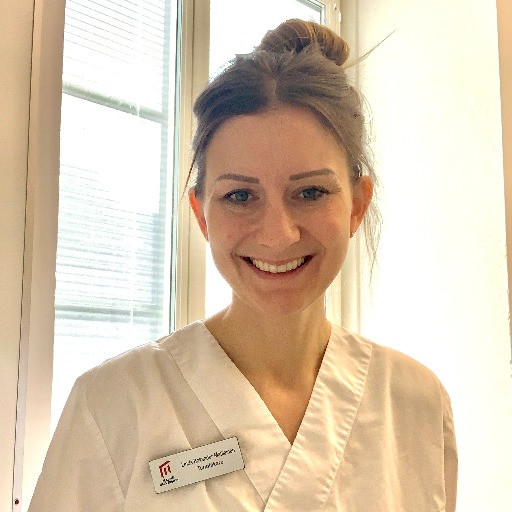We use cookies on this website. Cookies help us deliver the best experience on our website. Read about cookies.
-
- Education
- Education
- Programmes and courses
- Applications and admissions
- Tuition fees
- Scholarships
- Exchange studies at Malmö University
- Study Guidance
-
- After admission
- After admission
- Moving to Malmö
- Pre-orientation
- Arrival guide
-
- About studies at Malmö University
- About studies at Malmö University
- Why choose Malmö University
- Understanding university studies
- Connect with our students
On the page -
- Research
- Research
-
- Doctoral studies
- Doctoral studies
- Doctoral courses
-
- Doctoral schools
- Doctoral schools
- Adaptation of urban space through sustainable regeneration
- ComBine
- Culturally Empowering Education through Language and Literature
- Education, Learning and Globalisation
- Finding ways in a time of great future challenges (FinnFram)
- Swedish National Graduate School in Science and Technology Education Research
- Learning in Multicultural Societal Contexts
- Pedagogy and Vocational Skills
- Relevancing Mathematics and Science Education (RelMaS)
- Sustainable Movement Education
- The National Research School for Professionals in Social Services
- Research subjects
-
- Research centres
- Research centres
- Biofilms Research Centre for Biointerfaces
- Citizen Health
- Imagining and Co-Creating Futures
- Institute for Urban Research
- Malmö Institute for Migration Studies
- Literacy and Inclusive Teaching
- Centre for Work Life Studies
- Sustainable Digitalisation Research Centre
- Centre for Sexology and Sexuality Studies
-
- Research publications
- Research publications
- Search for research publications in Diva
- Malmö University Press
- Research events
- Participate in a research study
- Coffee Break Quiz
On the page -
- Collaboration and Innovation
- Collaboration and Innovation
- Innovation
- Collaboration with students
-
- Collaborate with researchers
- Collaborate with researchers
- Labs and facilities
- Culture collaboration
- Support Malmö University
- Alumni & Friends
On the page -
- About us
- About us
-
- Faculties and departments
- Faculties and departments
-
- Faculty of Culture and Society
- Faculty of Culture and Society
- Department of Global Political Studies
- School of Arts and Communication
- Department of Urban Studies
-
- Faculty of Education and Society
- Faculty of Education and Society
- Department of Childhood, Education and Society
- Department of Sports Sciences
- Department of Culture, Languages and Media
- Department of Natural Science, Mathematics and Society
- Department of Society, Culture and Identity
- Department of School Development and Leadership
-
- Faculty of Technology and Society
- Faculty of Technology and Society
- Department of Computer Science and Media Technology
- Department of Materials Science and Applied Mathematics
- Faculty of Odontology
- University Dental Clinic
-
- Find and contact Malmö University
- Find and contact Malmö University
- Visit Malmö University
-
- News and press
- News and press
- Graphic manual
- Map of the buildings (Google Maps)
- Merchandise
- Supplier information and invoice management
- Whistleblowing
- Management and decision-making paths
-
- Malmö University's strategy 2030
- Malmö University's strategy 2030
- Sustainability
- Widened recruitment and participation
- Quality assurance work at the University
-
- Malmö Academic Choir and Orchestra
- Malmö Academic Choir and Orchestra
- Student work – video pieces
-
- Annual Academic Celebration
- Annual Academic Celebration
- Academic traditions
- Meet our new professors
- Meet our new doctors
- Honorary doctors
- The University in a troubled world
On the page

Linda
Bokander Matilainen
Doctoral student
linda.bokander-matilainen@mau.se
orcid.org/0009-0004-6558-8340
Presentation
I am a doctoral candidate at the Department of Orthodontics at the Faculty of Odontology, focusing on research in orthodontics. My previous experience includes teaching at the Faculty of Odontology in the Department of Paediatric and Adolescent Dentistry, as well as working as a general dentist in both public and private sectors.
My research and forthcoming dissertation are part of the CROWDIT research project, a clinical longitudinal randomised multicentre study involving four locations in Sweden. The project evaluates and compares two different types of fixed braces. After treating children and adolescents with crowded teeth, the treatment outcomes are analysed from various perspectives: practitioner level, clinical level, patient level, and societal level.
The work involves evaluating and comparing clinical treatment outcomes using three-dimensional study models, profile radiographs, CBCT scans, and clinical photographs. Various instruments and measures are used to assess the treatments, such as Peer Assessment Rating, Little’s Irregularity Index, transverse width, and the inclination and position of the incisors. Additionally, any changes in soft tissue and alveolar bone are analysed. The impact of the treatments on patients’ health-related quality of life is assessed using patient questionnaires, including the EuroQol 5 Dimension Youth (EQ-5D-Y), Child Perception Questionnaire 11-14 (CPQ 11-14), and a patient satisfaction survey.
The research aims to provide evidence-based knowledge about the side effects and negative impacts of orthodontic treatment, promote individualised orthodontic care, and serve as a support for resource allocation within healthcare.
Publications
-
2025 | Article in journal
Treatment Effects and Treatment Time in Adolescents With Crowded and Displaced Teeth Treated With Fixed Appliance Systems Without Extractions: A Multi-Centre Randomised Controlled Trial
Linda Bokander Matilainen, Kristina Johansson, Michal Wiaderny, Anna Brechter, Sofia Petrén, Vincenzo D'Antò, Liselotte Paulsson
-
2024 | Article in journal
Self-reported pain during different phases of orthodontic treatment with fixed appliance: A multi-centre randomized controlled trial in adolescents with crowding
Kristina Johansson, Linda Bokander Matilainen, Michal Wiaderny, Henrik Berlin, Gunilla Klingberg, Houda Ghiasi, Anna Brechter, Liselotte Paulsson
